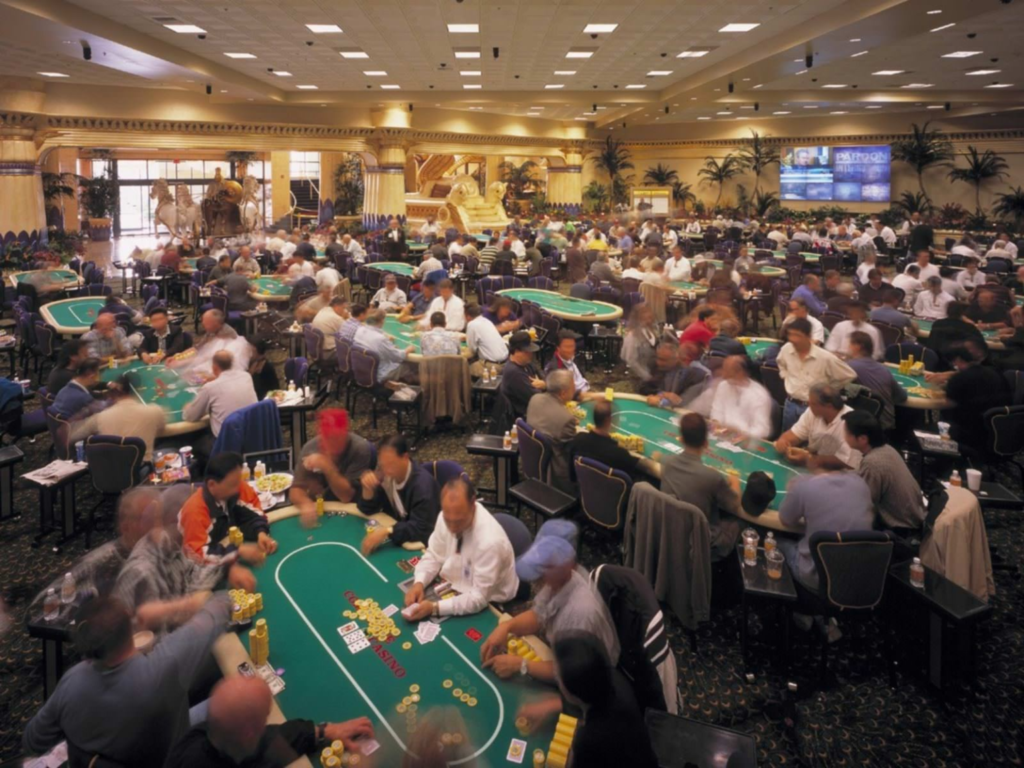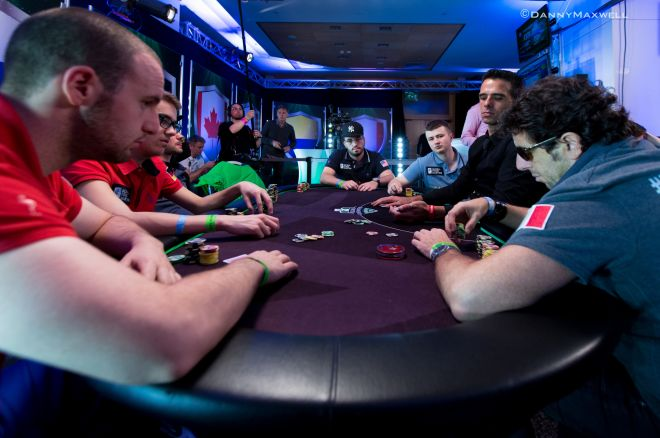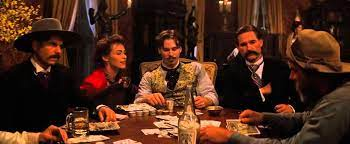THE IMPORTANCE OF GAME SELECTION
IN TEXAS HOLDEM
The key to winning at Texas Hold’em is not just playing your cards right. It’s also important to select the right game, one in which you can maximize your profits.
You should consider various factors when deciding which game you want to play. Attributes include the player’s skill level, the size of the blinds, and the level of aggressiveness at the table. It’s also essential to pay attention to the table’s dynamics and the players’ personalities, as this can significantly impact your chances of success. Ultimately, carefully selecting the right table can substantially increase your chances of winning in live Texas Hold’em cash games.

Table Personality & Game Selection
When discussing a table’s “personality,” we refer to the game’s overall feel. You must determine if the game is loose/passive or tight/aggressive, etc. There are four basic types of games, although some games may have periods of time that relate to all four. These are Loose/Passive, Loose Aggressive, Tight/Aggressive, and Tight/Passive. Let’s examine each of these and see how each relates to the importance of game selection in Texas Hold’em.
Selecting A Loose/Passive Game
In the world of poker, you’ll come across different types of tables, including the loose/passive table. You’ll notice a lot of noise, laughter, and chattering at such tables. Players at these tables tend to call more often than they raise, leading to a higher number of players seeing the flop. These players are likely to play too many hands, call too frequently, and are not fond of folding their hands. Instead of relying on the mathematical probabilities of the game, they trust their “luck” and intuition. They will call with hands such as inside straight draws, two-card flush draws, and almost any pair. Generally, you will find your worst players in loose/passive games, which makes these the games of choice.
Despite the risks involved, the primary reason why you’d want to play at a loose/passive table is that it gives you the best return on your investment. Winning the biggest pots at loose/passive tables isn’t guaranteed. However, when you win, you receive a significant payout compared to your investment in the pot. The downside is that opponents can draw out on you, meaning they might get lucky and win despite holding a weaker hand. Therefore, it’s essential to be cautious when playing at loose/passive tables, as you must play a tighter range than the rest of the table.
Your profit comes from players who make poor decisions; the more mistakes a player makes, the poorer the player. You want to play against poor players in loose games. In most games, you don’t have to be a great player! You just have to be better than most at the table.


Loose/Aggressive Table
Tables that are loose/aggressive have several similarities with tables that are loose/passive. However, there is much more raising and re-raising in the former, both before and after the flop. Although fewer players are involved in each hand, the cost to play will be significantly higher than in a passive game. These games can result in huge swings in your stack size, but they can also be very profitable.
The two most important factors determining the level of risk involved in a game are the information you have and the amount you must bet. If the aggressive player is sitting on your right, you will have access to much information before deciding to play. You will know what some of your opponents have done and what the aggressor has done before it’s your turn to act. On the other hand, if the aggressor is on your left, you must constantly worry about being re-raised if you bet with marginal drawing cards. This increases your risk because you must put more chips in the pot to stay in the hand.
If you’re asking for my recommendation, I suggest avoiding this game altogether. However, if you still decide to play, you must remember to be the most conservative player at the table. You should only play with premium cards and be willing to fold hands that you would normally play, depending on the flop and the actions of other players.
Tight/Aggressive Game
Playing at a tight/aggressive table will be challenging and should be avoided. If you find yourself at one of these tables, try to change tables as quickly as possible.
Tight/aggressive players are known to play very few hands, but when they do, they tend to raise and re-raise. The table will be quiet, and the players rarely make mistakes. They are patient, methodical, and often the best players in the room.
Some people believe that playing a tight/aggressive style is no longer effective because most players now play a wider range, call down lighter, and are more aggressive with marginal hands. While this may be true to an extent, dismissing the tight/aggressive player altogether would be a big mistake. If you find yourself in one of these games, you can play slightly looser than your opponents, but remember that it will usually cost you more to see the flop and proceed post-flop.
When you have lighter holdings, you increase your risk of losing everything. This is because a tight, aggressive player has a limited range of hands they open with, and they will almost always raise or even re-raise before the flop. Winning in poker is not always about making brilliant plays; it is about capitalizing on the mistakes made by other players. Tight/aggressive players make fewer mistakes than others, so it’s important to be cautious when playing against them.


Tight/Passive Table
Tight/passive players share many similarities with their tight/aggressive counterparts. Both types of players are disciplined and will only play premium cards. At tables with tight/passive players, there is usually very little raising, and if there is a pre-flop raise, it’s almost always with KK, AA, or AKs.
As a result, it can be challenging to earn money in these types of games. Pots are generally small since there is minimal raising and only a few players in each hand. When there is a lot of action, you can be confident that the players involved have very strong hands, likely the “nuts” or “second nuts,” and you should adjust your play accordingly.
If you are playing in a game where the players are tight and passive, you can open up your range of hands when you are in a late position and try to steal the blinds. However, when you get called, you can be almost certain that you will not get re-raised and will probably have to check post-flop. It is best to avoid betting unless you have a strong hand; otherwise, you may get in trouble.
Seat Selection In Texas Holdem
Loose and aggressive games, as well as passive ones, offer the most opportunities. Choosing the most favorable seat is essential to minimize risk in an aggressive game. Ideally, you should sit to the left of the most aggressive bettor.
There is a widespread belief in poker that suggests having loose players sitting to your right is beneficial. This is because the flow of money tends to move towards the left. The reasoning is that players on the left typically have more information available than those on the right, and loose players present the most opportunities for profit. However, it is worth noting that some highly respected players and authors prefer to have loose players, particularly aggressive ones, to their left. I disagree with this approach. I would rather have opponents who pose the most significant challenge on my right-hand side.
Selecting a seat in a passive game may not seem significant, but if you notice a player who tends to raise more frequently than the others, it would be wise to move to the left of that player to gain an advantage over them.


Game Selection In Texas Hold’em – Summary
Playing at a loose poker table makes you more likely to experience bad beats. Loose players tend to rely on luck and enjoy seeing the river even though, statistically, it is not in their favor. Even with the best possible starting hand (Aces) at a highly loose 9-handed table, you can only expect to win 30% of the time. This means that your Aces will lose 70% of the time. It’s essential to accept that bad beats are an inevitable part of playing in any loose game and avoid complaining about them.
Once seated at a poker table, adjusting your playing style according to the game’s personality is crucial. The table’s personality refers to where it fits on the PATL matrix: Passive, Aggressive, Tight, and Loose. It’s essential to adapt and blend in with the table to a certain extent. However, when the table is loose, you should play slightly tighter; when the game is too tight, you should be a bit looser. Similarly, when the gameplay is passive, you should be more aggressive. This is not only a logical action to take but also mathematically correct.

5 thoughts on “The Importance Of Game Selection In Texas Holdem”
Hi, Neat post. There is an issue together with your site in internet explorer, could check this?K IE nonetheless is the marketplace chief and a large portion of other folks will omit your excellent writing because of this problem.
What¦s Happening i’m new to this, I stumbled upon this I’ve discovered It positively helpful and it has aided me out loads. I am hoping to contribute & assist other customers like its aided me. Good job.
Hi are using WordPress for your blog platform? I’m new to the blog world but I’m trying to get started and create my own. Do you require any coding expertise to make your own blog? Any help would be really appreciated!
https://semaglupharm.shop/# No prescription diabetes meds online
http://lipipharm.com/# Safe atorvastatin purchase without RX